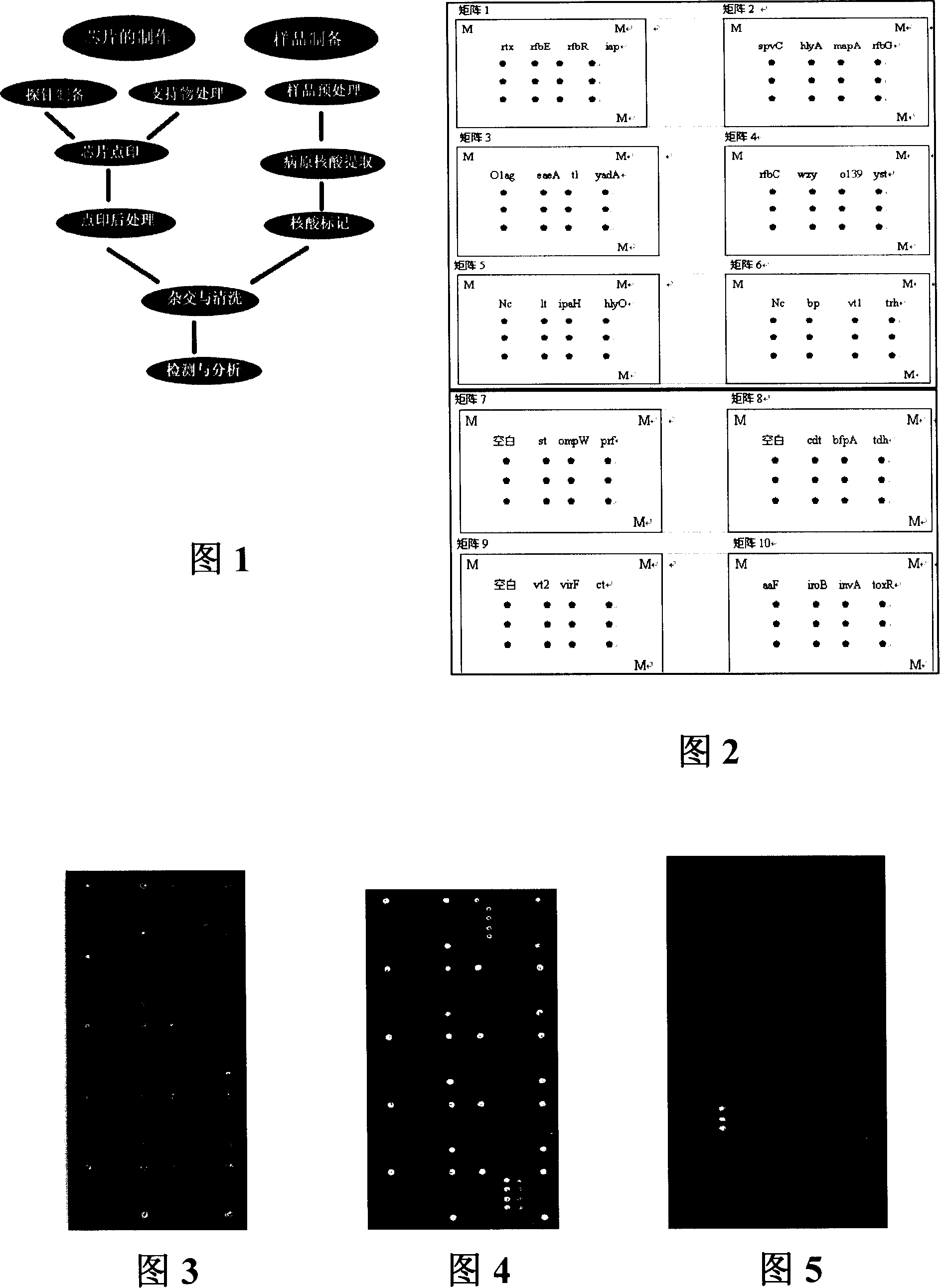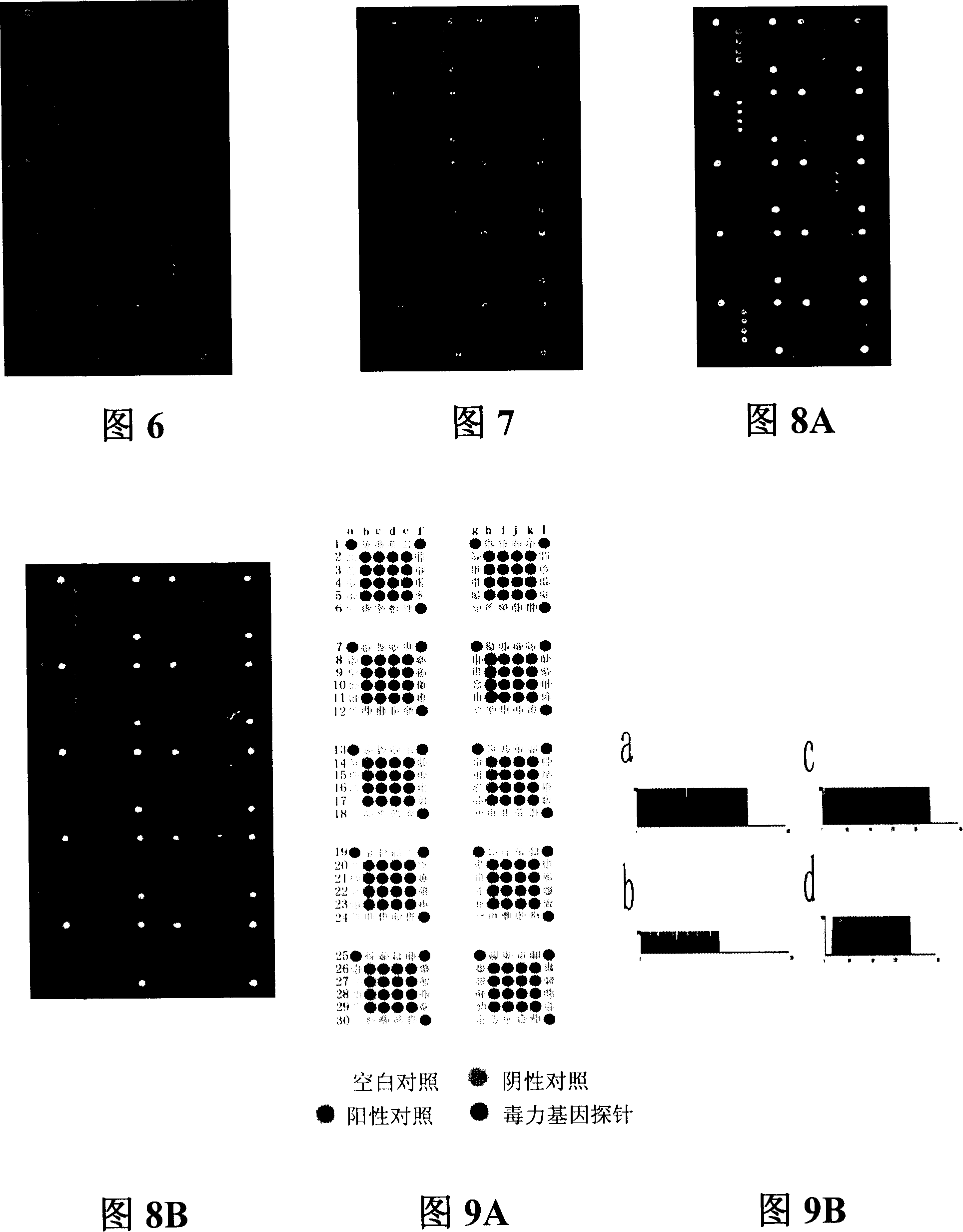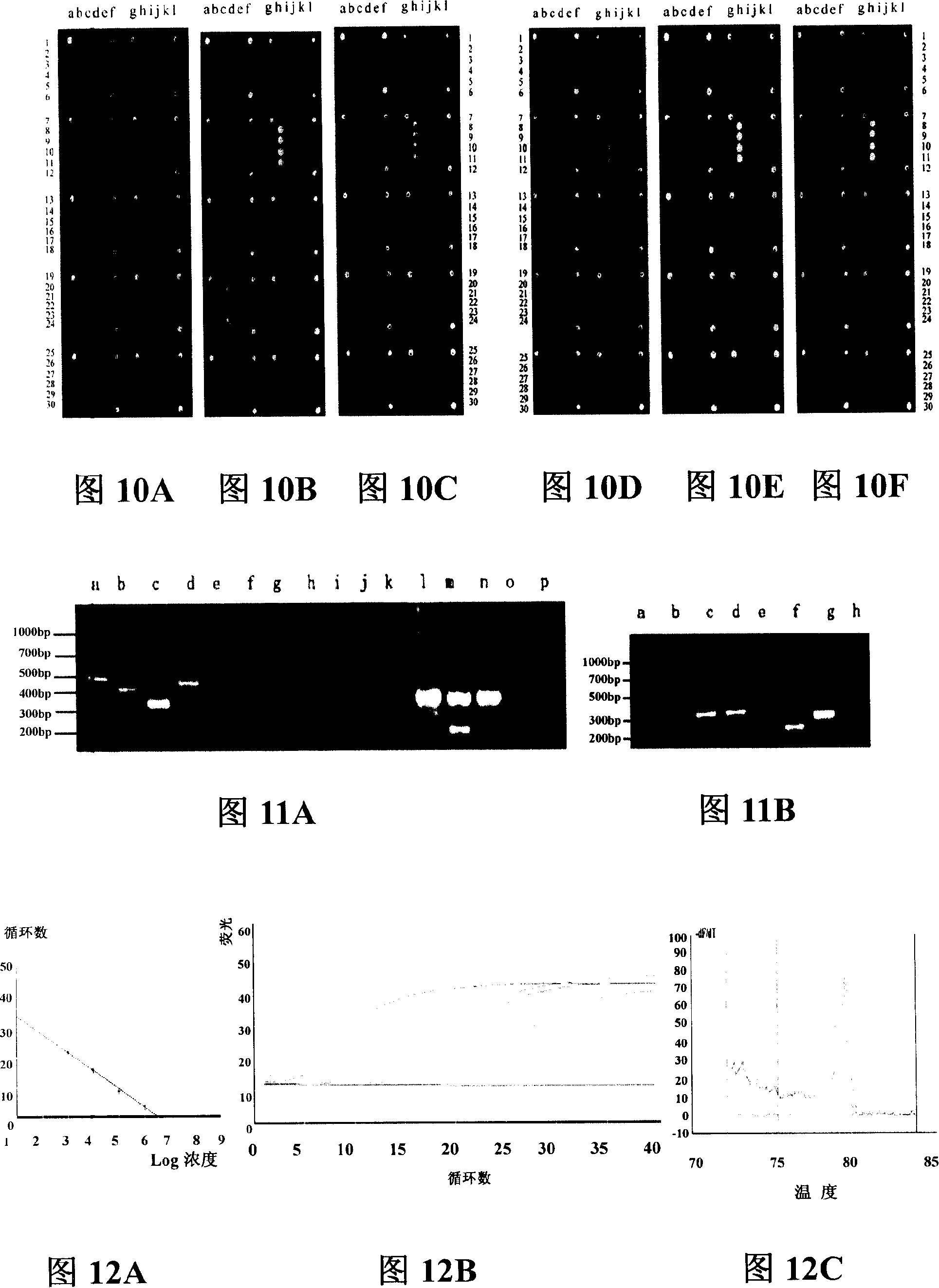Pathogenic microorganism DNA detecting chip and preparation method and application thereof
A technology for detecting pathogenic microorganisms and chips, applied in biochemical equipment and methods, measurement/testing of microorganisms, DNA/RNA fragments, etc., can solve problems such as hindering food import and export
- Summary
- Abstract
- Description
- Claims
- Application Information
AI Technical Summary
Problems solved by technology
Method used
Image
Examples
Embodiment 1
[0060] Embodiment 1: Preparation of pathogenic microorganism detection chip
[0061] 1. Extraction of genomic DNA of pathogenic microorganisms: the following pathogenic microorganisms are extracted routinely: Vibrio cholerae, pathogenic Escherichia coli, Campylobacter jejuni, Yersinia enterocolitica, Vibrio parahaemolyticus, Salmonella, Shigella, Listeria DNA. (See A Laboratory Guide to Molecular Cloning (Third Edition), Cold Spring Harbor Press)
[0062] 2. Screening of primers and preparation of detection probes
[0063] Using the above-mentioned pathogenic microorganism genomic DNA as a template, use the primers corresponding to each strain (see Table 1, synthesized by Beijing Saibaisheng Gene Technology Co., Ltd., Shanghai Sangon Bioengineering Co., Ltd. and Beijing Aoke Biotechnology Co., Ltd.) The strain was amplified by PCR (TaqDNA polymerase, purchased from Beijing Broadtech Biogene Technology Co., Ltd.), and the obtained product was identified by agarose gel electro...
Embodiment 2
[0087] Example 2: Marking of the target gene in the sample to be tested
[0088] (1) Prepare the sample to be tested according to the method described in Example 1;
[0089] (2) The samples are labeled and purified by multiplex PCR amplification and then hybridized with the chip. Multiplex PCR fluorescein-labeled sample PCR reaction system 25 μl, the primers are mixed primers, combination 1, combination 2, and combination 3, the concentration is 1.6 μM, the samples to be tested are labeled with three sets of primers, and then the labeled products are mixed and purified.
Embodiment 3
[0090] Embodiment 3: the detection of sample to be tested
[0091] 1. Hybridization detection chip based on PCR product immobilization method
[0092] Steps:
[0093] (1) Place the slide in the hybridization chamber.
[0094] (2) Heat and denature the microcentrifuge tube containing the labeled probe: cook in boiling water at 100° C. for 3 minutes.
[0095] (3) Add 100 μl of high-efficiency hybridization solution (Broadtech Co., Ltd.) into the tube, mix well by pipetting, and pour into the hybridization chamber. Hybridization was performed at 42°C for 18 hours.
[0096] (4) After 18 hours, the slides were taken out, and put into membrane washing solution I (2×SSC, 0.1% SDS) to wash for 2 minutes.
[0097] (5) Wash the membrane with II solution (0.1×SSC, 0.1% SDS) for 2 minutes.
[0098] (6) Wash with ultrapure water for 2 minutes, dry and wait for scanning.
[0099] 2. Chip cleaning
[0100] (1) Wash in membrane washing solution I (2×SSC, 0.1% SDS) for 2 minutes.
[01...
PUM
 Login to View More
Login to View More Abstract
Description
Claims
Application Information
 Login to View More
Login to View More - R&D
- Intellectual Property
- Life Sciences
- Materials
- Tech Scout
- Unparalleled Data Quality
- Higher Quality Content
- 60% Fewer Hallucinations
Browse by: Latest US Patents, China's latest patents, Technical Efficacy Thesaurus, Application Domain, Technology Topic, Popular Technical Reports.
© 2025 PatSnap. All rights reserved.Legal|Privacy policy|Modern Slavery Act Transparency Statement|Sitemap|About US| Contact US: help@patsnap.com



